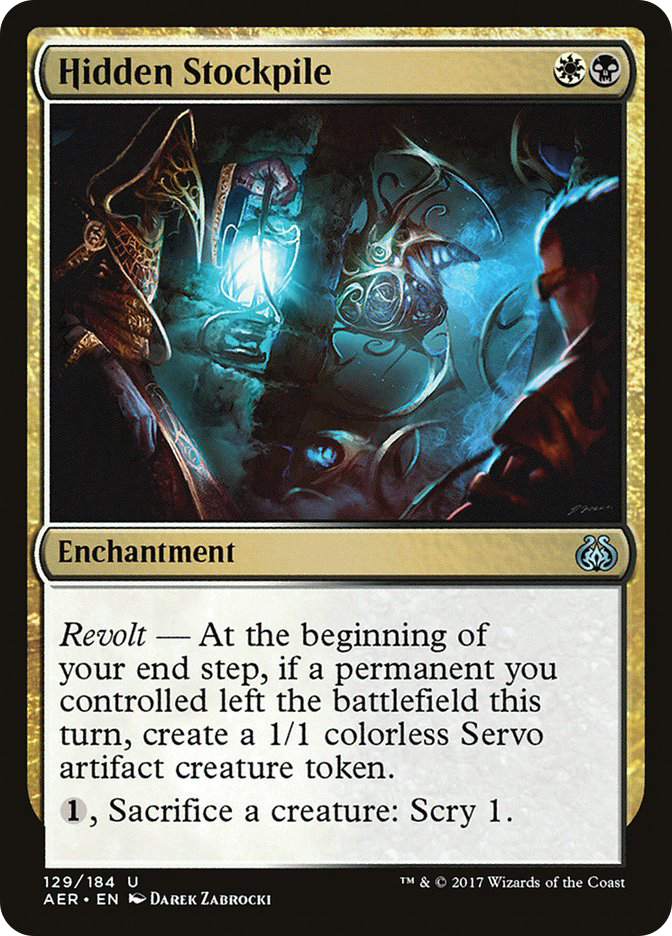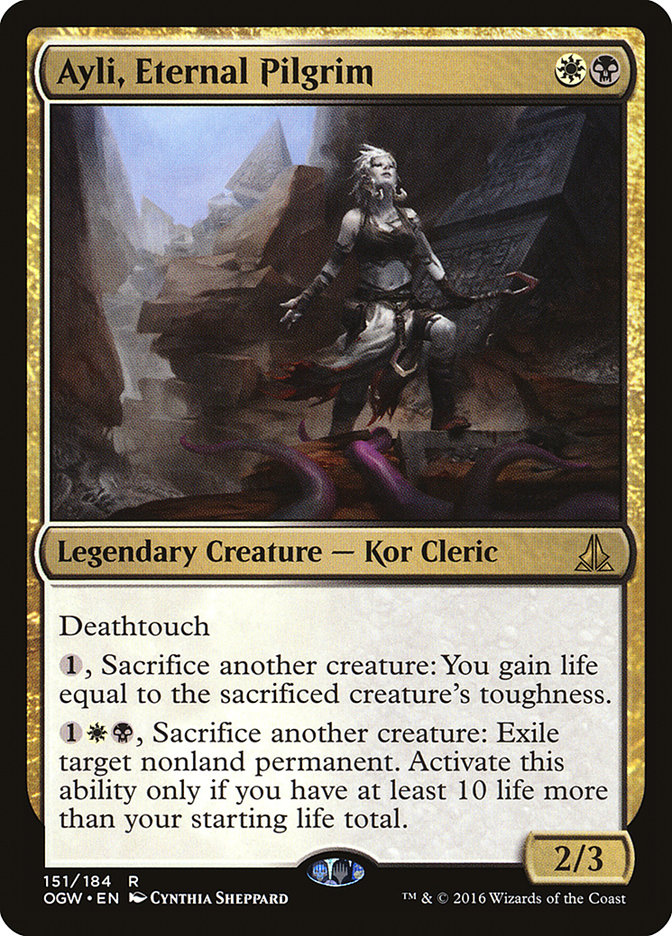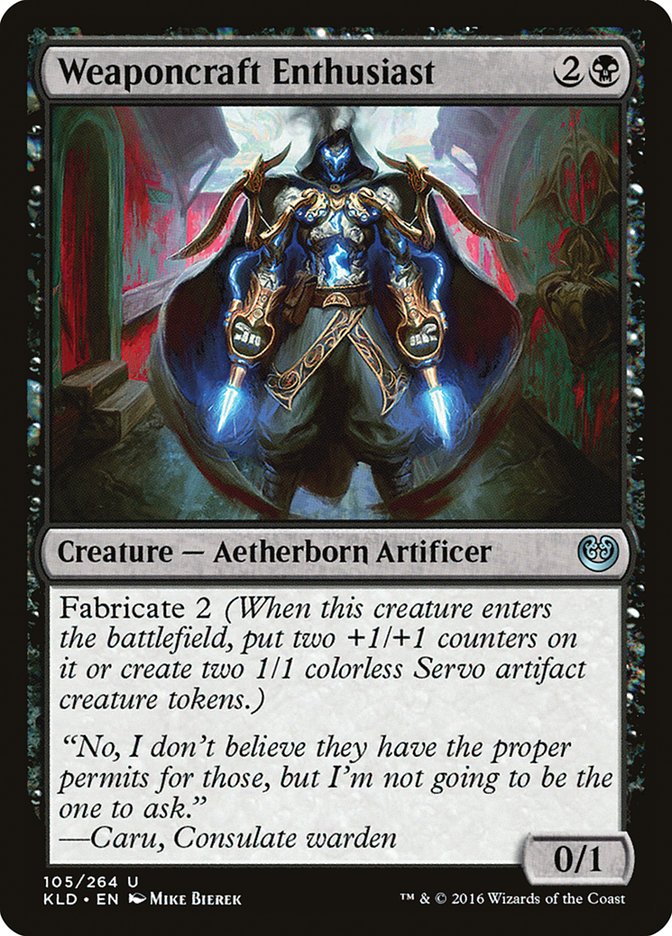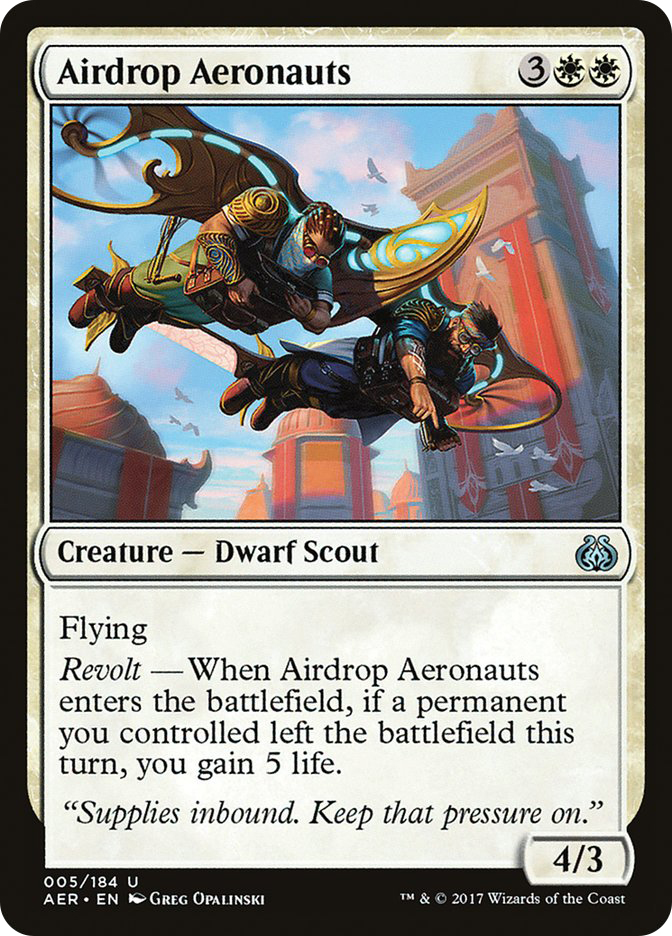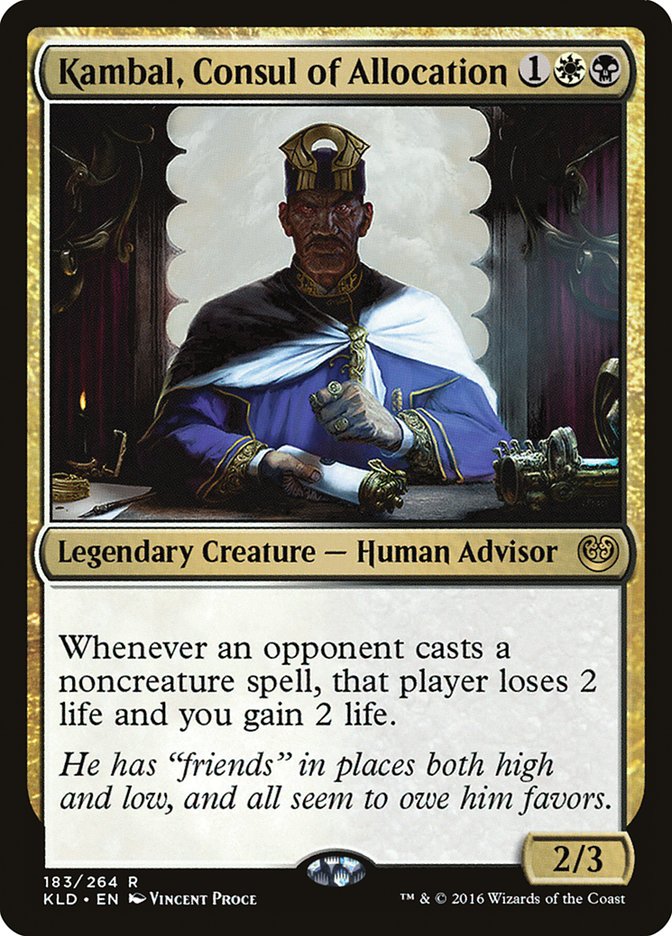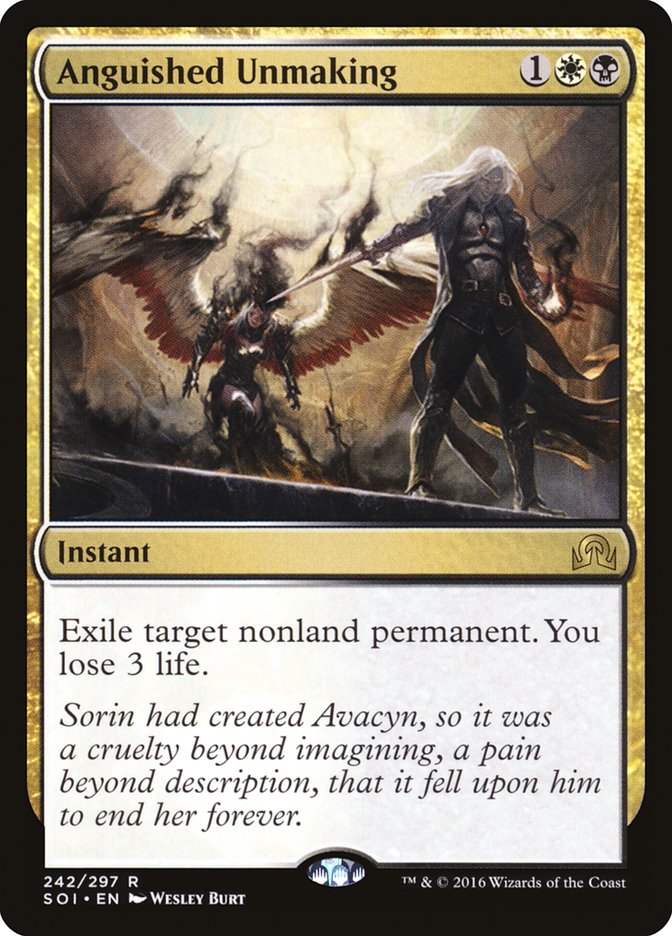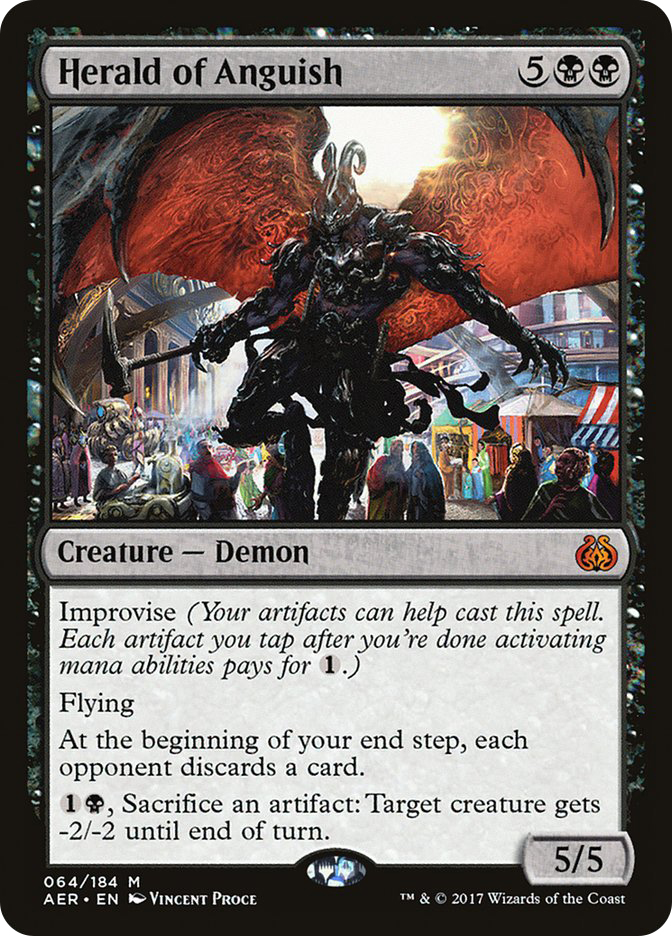Standard got a facelift at #SCGCOL, and one that’s ripe for exploration.
One quick look at the Top 8 gives us five cards that seemed to drive the weekend.
These cards, while not individually exceptional, work together with powerful, well-integrated synergies that hint at something greater: brews won the day. While some might decry the overabundance of B/G decks as top performers, further analysis shows that the tournament-winning deck driven by Brennan DeCandio looks, and plays, considerably differently from his finals opponent Stephen Dykman’s nearly undefeated aggro deck. I’m excited to see such diversity within two colors, and with lots of Aether Revolt Standard left to learn and play, things are definitely looking brighter on the other side.
Last week, we talked about Aether Revolt’s eponymous mechanic, Revolt, and its applications in green and white. Today’s featured card didn’t see a lick of play this past weekend and yet, while perhaps not the most powerful card in Aether Revolt, it may be one of the most interesting because of its interactions with Revolt: Hidden Stockpile.
Creating tokens is nice, and the easier and cheaper you make it, the more potent you can make your deck. Hidden Stockpile is about as cheap a constant noncreature token producer as you can get, and the fact it takes no further investment makes it particularly attractive. No, it’s not Bitterblossom, but this little enchantment has a lot on its side, including a way to continually fuel itself thanks to its sacrifice ability.
Black and white have always lent themselves to sacrificing permanents. Not too long ago, Cartel Aristocrat and Blood Artist together were one of Standard’s scariest engines, providing cheap materials to a potent life drain engine. While the state of sacrifice isn’t at that level anymore, we’ve been given plenty of tools in Aether Revolt itself and in previous Standard-legal sets to enjoy opportunities to trigger this enchantment.
In fact, the oldest Standard-legal set has the perfect spell.
Gideon, Ally of Zendikar stormed onto the scene in late 2015 and never left it despite various upheavals in the Standard format. Here, it provides exactly the blend of effects that we need. Creating tokens is great, but if they’re small, there’s usually not much point. Low-powered sweepers can hit them, they don’t apply much pressure, and your games drag out to the point where they aren’t terribly relevant anymore. Tokens are pretty decent in Limited games, but they’ve been in and out of favor for a while.
This planeswalker helps Hidden Stockpile both ways. When he enters the battlefield, you can immediately create an emblem, removing him from the battlefield and triggering Revolt, granting you a 2/2 Servo. This kind of interaction has me thinking something’s there.
My first draft of a Hidden Stockpile deck fell into place before #SCGCOL, so it was in enough of a vacuum that I knew it was going to be just that, a draft.
Creatures (16)
- 3 Carrier Thrall
- 3 Ayli, Eternal Pilgrim
- 2 Indulgent Aristocrat
- 1 Angel of Invention
- 3 Weaponcraft Enthusiast
- 3 Vengeful Rebel
- 1 Airdrop Aeronauts
Planeswalkers (6)
Lands (25)
Spells (13)

The original plan of the deck was a midrange, attrition-style strategy where we eliminate enough threats and cast sufficient planeswalkers to bolster our tokens and overwhelm our opponent’s ability to effectively react. Multiple tokens on one card would help me stay ahead of the creature race and deflate single-target removal, something I felt would be prominent in the early weeks of Aether Revolt Standard.
Creatures
While Walking Ballista has seen a solid amount of play (and featured in my deck from last week), Carrier Thrall seemed like the ideal choice for a two-drop in this deck. It provides a roadblock and two Revolt triggers, one of which can be on-command for profit. Ayli, Eternal Pilgrim is a creature I’ve come back to over and over again since her release, but here, she provides both a solid, on-curve creature body and a sacrifice ability to boot. If your life is more relevant than the ability to scry, you can always opt to head that direction.
Weaponcraft Enthusiast caught my eye in Kaladesh, but sufficient support to play a black Hordeling Outburst didn’t appear until this set. Now, with a Gideon, Ally of Zendikar follow-up, the 0/1 portion could attack too, and either way, I’d have Revolt fuel in the form of the creature itself. Vengeful Rebel, another Revolt card akin to Wasteland Strangler, could follow up an early trade as a one-two punch. Indulgent Aristocrat, plus the rampant Anthem effects in the deck, could make a formidable lifelink attacker. Its sacrifice could help itself and Carrier Thrall,as well. Angel of Invention, like Weaponcraft Enthusiast, was an army-in-a-box with a sweet effect if it happened to stick around. However, the five-mana price tag seemed risky.
I dunno. Something about this card intrigues me. It’s just shy of an Air Elemental in stats, and the five life seems like it could really turn things around. Corner case out of corner cases, but I like starting one.
Spells
First off, let’s get Fatal Push out there.
This one-mana spell has people looking at every possible application. Fetchlands make Revolt easy in Modern and Legacy, and even Commander could deal with lots of generals with this spell. Standard is simply the format where this spell has the least competition. Whether you’re snuffing offensive starts or clearing the path for your own squad, the community had somewhere to put this spell. A set of Hidden Stockpiles is important. Bear in mind that one Revolt trigger makes two tokens if you have two Stockpiles out, so you can double up each time as long as you have one to start.
Gideon, Ally of Zendikar also deserves a set. As Servos are the deck’s primary path to victory, casting and ultimating this Standard staple is nearly essential for a clean win. Renegade Map is a new entry, but this easy Revolt enabler provides whichever land you need untapped and free. This ensures on-time, on-color plays on turn 2, including the “turn 1 Renegade Map, turn 2 crack for the other basic land and cast Hidden Stockpile, put a 1/1 onto the battlefield” start.
Liliana, the Last Hope shrinks opposing creatures to Servo size and, once she gets going, she can -2 herself to trigger Revolt. Grasp of Darkness and Anguished Unmaking are more conditional removal, but I like having access to maindeck copies of one each.
Lands and Sideboard
Except for the Evolving Wilds, used in last week’s deck as easy Revolt triggers, the set is pretty standard. With Renegade Map and Evolving Wilds, I wanted to have basic lands instead of Forsaken Sanctuary, the worst of the B/W two-color lands.
The sideboard was designed with the future in mind; with that future behind us now, we’ll come back to it later.
As I tried this deck at my friend’s Aether Revolt testing party, #SCGCOL played in the background. As I tested my proxied version of this deck, I looked over my opponent’s shoulder occasionally, taking in the matches I was watching. It was certainly more interesting than the games I was playing.
Without testing, I should have seen the synergy commitments I made that were wildly overexaggerated. The power level of the deck was hilariously low and, while mildly functional, felt incoherent, and the “gotcha” Revolt moments failed to satisfy. Moreover, the deck relied heavily on Gideon, Ally of Zendikar as a beater, leaving the Servos behind to protect him as my main win condition. It applied no pressure, and some cards were downright bad in the deck.
Yeah, it was mostly black cards.
I had misbuilt, overthinking the deck and its functionality. It was clumsy, poorly balanced, and unsatisfying to pilot. It felt linear, and due to the low power level, I was forced into most of the lines of play I took, robbing me of most of the agency that adds to the fun of playing Magic, that sense of being in control.
I had other decks to test, thankfully, but the testing party dealt four match losses to this stack before I tucked it back into my bag.
We were watching Round 8 of #SCGCOL when I realized something; the deck sitting in my backpack had been applying no pressure. On the screen, a B/G Aggro deck was beating down hard and heavy, crunching the clock. Removal did little to stop the onslaught, and before long, his opponent was subdued.
With that in my mind, I rebuilt for Day 2.
Creatures (17)
- 2 Ayli, Eternal Pilgrim
- 4 Thraben Inspector
- 3 Master Trinketeer
- 2 Angel of Invention
- 4 Metallic Mimic
- 2 Yahenni, Undying Partisan
Planeswalkers (4)
Lands (25)
Spells (14)

Wouldn’t you know, adding more pressure strangely improved my games.
Thraben Inspector came back from Week One of Aether Revolt because I’ll be darned if there’s a better Revolt-centered creature for one mana. Early in the game, it can block or chip away at them, but every Anthem makes it a more respectable fighter. It’s easy to trade in later with a sacrifice effect, and the Clue provides an additional Revolt trigger.
If Servos are the plan, Metallic Mimic has got to be part of the equation. Combined with the other new addition, Servo Exhibition, you can smack for four on turn three, then six the following turn (or nine if you draw a second Mimic.) Even if you play the Mimic on turn two, you can attack with a 2/3 Thraben Inspector, and no one wants to spend removal on that thing. I’m happy to get Adaptive Automaton for one mana less and one toughness less.
Master Tinkerer provides a redundant Anthem affect and a way to produce more creatures in the late-game. Thanks to Clues drawing lands and more pressure, using four mana to not die will be more likely. Yahenni, Undying Partisan provides something I had been underestimating: free Revolt triggers. Yahenni’s self-protection is great, and any Anthem effect makes the card’s indestructibility all the more intimidating. Angel of Invention was also a strong card, and I found I often just made it a 4/3 Gisela, the Broken Blade impersonation.
The spells have been streamlined mostly, plus the Renegade Map / Evolving Wilds package has been reduced. It was a bit obnoxious in the first iteration; this provides you the one land you need during the game without getting in the way of actually getting aggressive.
The sideboard also got a major overhaul. Kambal, Consul of Allocation was worthless; it did not nothing to support the gameplan and I never sided it in. Felidar Cub was a much better way to trigger Revolt, and Decommission’s lifegain was pretty irrelevant. Anguished Unmaking is here as a hard answer to Saheeli Rai and Felidar Guardian nonsense, now as a full set. Even on the draw, I can have it ready in hand if they go for it on turn 4.
Herald of Anguish did very well in the control matchups it appeared in, providing hand pressure as well as creature pressure. It’s no Sphinx of the Final Word, but I was amazed with how easy this creature was to cast, and I liked the quick pressure. Vengeful Rebel had no business in the maindeck, but this was actually a great card against aggressive decks where you were racing. The body is fine, but the ability to smack their follow-up play put this card ahead from a tempo perspective, killing things like Rishkar, Peema Renegade; Winding Constrictor; and Sylvan Advocate. And yes, there’s still one Airdrop Aeronauts.
This deck looks much more Servo-based than Revolt-based, but with Hidden Stockpile as the deck’s core focus, both themes can be achieved in a fun and interesting package. This particular build allows for more angles of attacks that are matchup-specific, and the flexibility is welcome compared to the original drab list. The new Standard environment will still have a hard time answering these Servos, so at the end of the day, I think this aggressive, midrange-y slant on Servos and Revolt is the far better version of the deck.
As we build into the new format, has Revolt played a critical role in your build? If we talk about Servos instead, what token strategy has granted you fun, success, or both?



